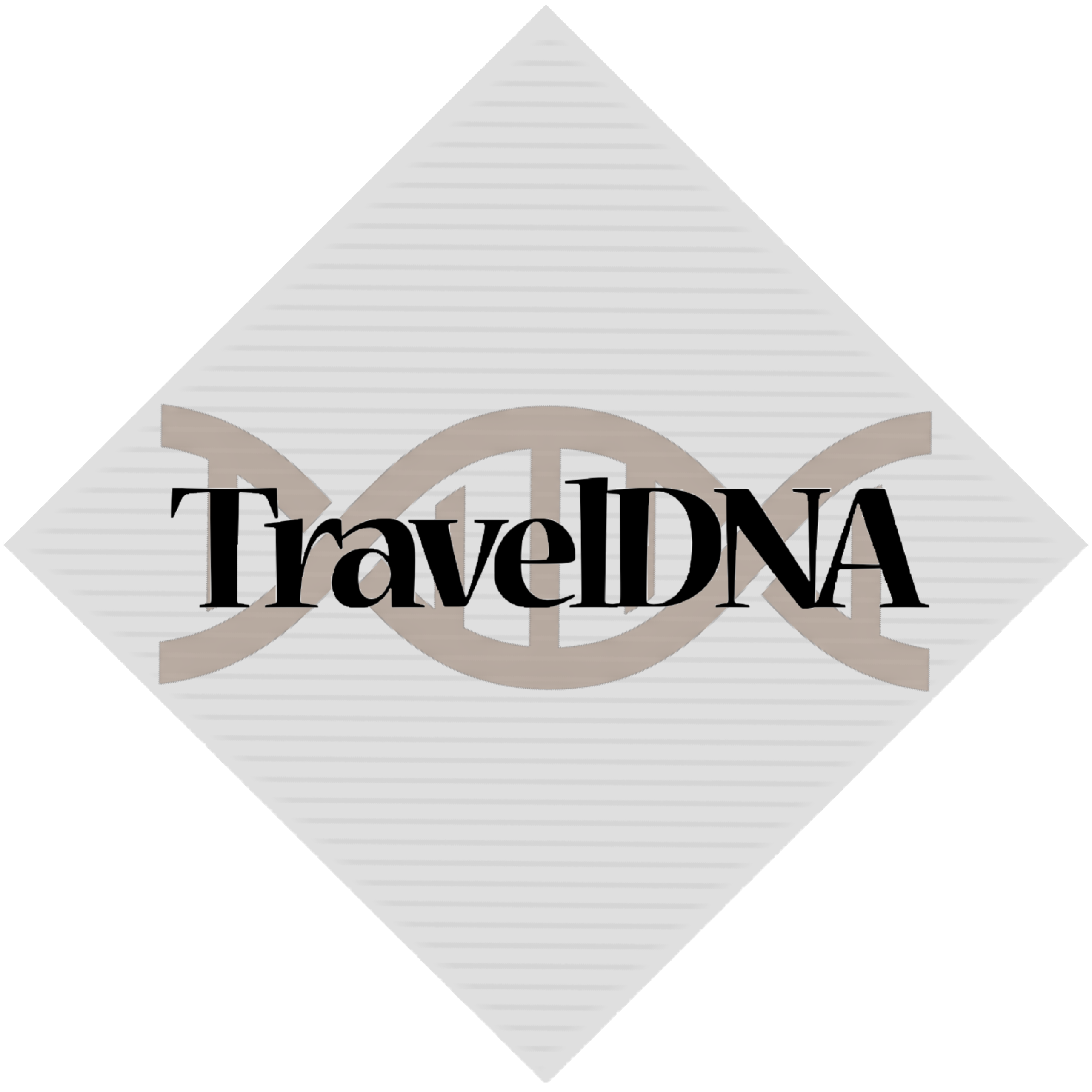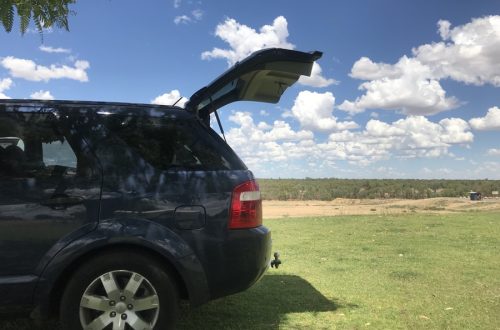Buying a car in Australia

Spending a lot of your dineros abroad isn’t fun. For us, the decision between buying or hiring a car for our roadtrip through Australia was easy. Hiring a car is very expensive in Australia, especially in high season. If you go to Australia for a longer period like 3 months or more, the depreciation of the car is often less than the rent including insurance. If you can make a good deal on your purchase and resell, it doesn’t have to cost you much, or nothing at all if you’re lucky.
Preparation
Buying a car or a campervan in Australia can be a time consuming task in the first weeks of your stay. It took us two weeks before we found and could pick up the car we wanted. It’s also very important to prepare yourself thoroughly beforehand.
Think about what exactly you want
A campervan with a kitchen, an SUV that just fits a mattress or a small car to take you from A to B. Though a car with bigger wheels is more comfortable, for most roads a two wheel drive car is sufficient because the main roads are well maintained throughout Australia. Automatic gear is really relaxing and (working) airconditioning is a must! Furthermore we can suggest your car has comfortable seats and you should feel you can trust your car completely. From our experience, you only need a firm bull bar when you plan to drive at night, which you probably won’t.
Think also about the make of your car. Brands like Ford, Mitsubishi or Toyota are very common all around Australia and probably won’t give you any trouble when you’re in need of a spare part.
Do research and read reviews
Before buying a car or campervan you can orient yourself on different backpacker Facebook groups and on Gumtree, the Australian Marketplace. This is where most used cars are traded and it’s also used by dealers. Check the supply and demand of the specific type of vehicle you are looking to buy. What is an acceptable price for this car, year and kilometres.
High kilometres and year of build
Eventhough a vehicle is well maintained the parts of an older or high kilometres car have endured a lot. Wiring, plugs and screws, rubbers and of course the chassis.
We can recommend, if it fits your budget, to look for a car up to 10 years old and with a maximum of 200k on the counter. This of course is no guarantee for a problem free trip but it will reduce the chance to it.
What do you want to spend?
Think ahead about the price range of the potential buyer of your car. Backpackers looking for a car to sleep in don’t usually have too much to spend. Aussies looking for family car have their own budget too.
Selling in a price range of A$ 4000.00 to A$ 7500.00 would be a safe range depending on the age and state of the car.
Test and compare
See different cars and do multiple test drives. Especially when you are looking for a specific model you need to test and compare. Listen to the sound of the engine, test the breaks, the steering and don’t forget to look under the hood, even if you have no idea what you are looking at. Does the airconditioning actually work, the electric windows? Push some buttons!
Dealer or private seller?
The same car would probably be higher priced at a car dealer but has a more trustworthy technical state and sometimes even a (negotiable) warranty. If you do want to buy a car from a private seller, consider doing a mechanical pre-purchase check at a garage of your choice. This is not the same as a roadworthy check that the car should have had already, where they specifically check the safety of the vehicle. The pre-purchase check can point you at worn down parts or engine failure and is a hundred Dollars well spend.
If the seller doesn’t want to cooperate with this check, this might not be the car you’d want to spend your money on. Plenty of other fish in the sea!
The sale
The car needs to have a registration, the Rego, which says who owns and is responsible for the car. A Rego is a mandatory vehicle registration which can diverse in every state. So if wherever you buy a car you’ll need to change the name on the Rego. It’s a complex process that totally depends on where the car is registered and where you want to change ownership.
Usually the already paid Rego for the next months will be included in the selling price.
When you buy a car at a dealer, all the paperwork will be arranged for you by the dealer. You sign a form to put the car in your name, you will receive a document of ownership and as a driver with a foreign license you will receive an Australian drivers license number.
When you buy the car from a private seller, you both need to arrange the ownership. This is not easily done in every state. In some states it’s possible to change the Rego online and other states require you to visit a governmental office within the state. Best to make a call to the government of this state for any questions. You can of course visit a car dealer and ask how this works too.
On this page you can read all about Regos and states.
You can also buy a car without registration. The seller then needs to take off the license plates and send them to his governmental registration office. He has to fill in a form to waive his ownership. You can then register the car with a new Rego in the state you are currently in. You will need a Road Worthy Certificate for this.

Insurance
So, you’ve bought a car, congratulations! You’ll need to insure your ride. We have bought our car in Cairns and is subject Queensland Rego. in Queensland a compulsory third party (CTP) insurance is mandatory. This covers only physical injuries to the counterparty. Do not confuse this with a third party liability insurance which also reimburses damage to other cars.
For insuring the damage to other people’s property and our own vehicle we have chosen a Allianz comprehensive insurance which costs us A$45 per month and also covers damage from weather and violence.
Think carefully about this extra insurance, for it can prevent a small accident from having an expensive ending.
Roadside assistance
Traveling along the coastline you’ll visit many small towns and there’s always someone passing you by, but as soon as you leave this area and travel through nomansland it can sometimes take hours before you see another car. Besides the fact that you should really prepare for the outback, you can consider being a member of Roadside Assistance. We bought a membership with Allianz, it cost us A$99 for a year which is nothing compared to the price of your misery when you’re in trouble.
The roadside assistance covers help throughout Australia. If your car needs to be towed the first 50 kilometres to the nearest town are for free and they have a battery to start you up again.
Traffic
In Australia you drive on the left side of the road. After a day you’ll do quite well but even after a few months driving we still have a moment we almost start on the right side of the road. Especially when you’re a little tired or when there’s not much traffic around. In Australia most accidents happen by tourists who forget to drive on the left side.
Furthermore there are rules… nooo… yes there are… It’s good to prepare yourself a bit by reading all about traffic rules in Australia for they can vary in different states. Download the pdf manual of the Australian government here.
In the Outback the driving is very relaxed. Long straight distances and (if you have) cruise control make you lazy, while you should be extra careful because for wandering stock can give you quite a scare. Sheep, cows, horses and kangaroos can cross the road any time and you really do not want to give them a bumper kiss. They mostly appear from dusk to dawn so driving at night is strongly discouraged. On our roadtrip through the country we’ve seen hundreds of fresh unfortunate kangaroos along the way.
Petrol
We’ve used the unleaded petrol ‘E10’ (with ethylene) or ‘91’ (octane 91) for our car. This is cheapest but might not be suitable for older cars, so check that beforehand.
Buying petrol isn’t necessarily a problem in the outback, however planning your moment to fill up your tank is a must. In some areas you can’t refuel for over 300 kilometres. Also for your wallet planning the next petrol stop can make a huge difference as prices along the same highway can vary from A$ 1.20 to A$ 2. For this it’s helpful to use the app ‘Petrolspy’ on your phone to check the petrol prices in advance.
Ready to go!
Now that you are ready to go, you can go shopping for camping stuff… yay!
Here is a summary of our car costs:
Purchase price car: € 4186 | A$ 6700
Rego 5 months (registration fee): € 368 | A$ 590
Camping gear a.o.: € 437 | A$ 700
Full insurance for 5 months: € 135 | A$ 215
Roadside assistance 1 year: €62 | A$ 100
Maintenance: € 156 | A$ 250
Total spending car: € 5344 | A$ 8555
Selling price car: € 3561 | A$ 5700
Driving around Australia for five months has cost us € 1783 | A$ 2855 that comes to € 12 | A$ 19 per day.
This does not include petrol. On petrol we’ve spend an average of € 7 | A$ 11 per day.


